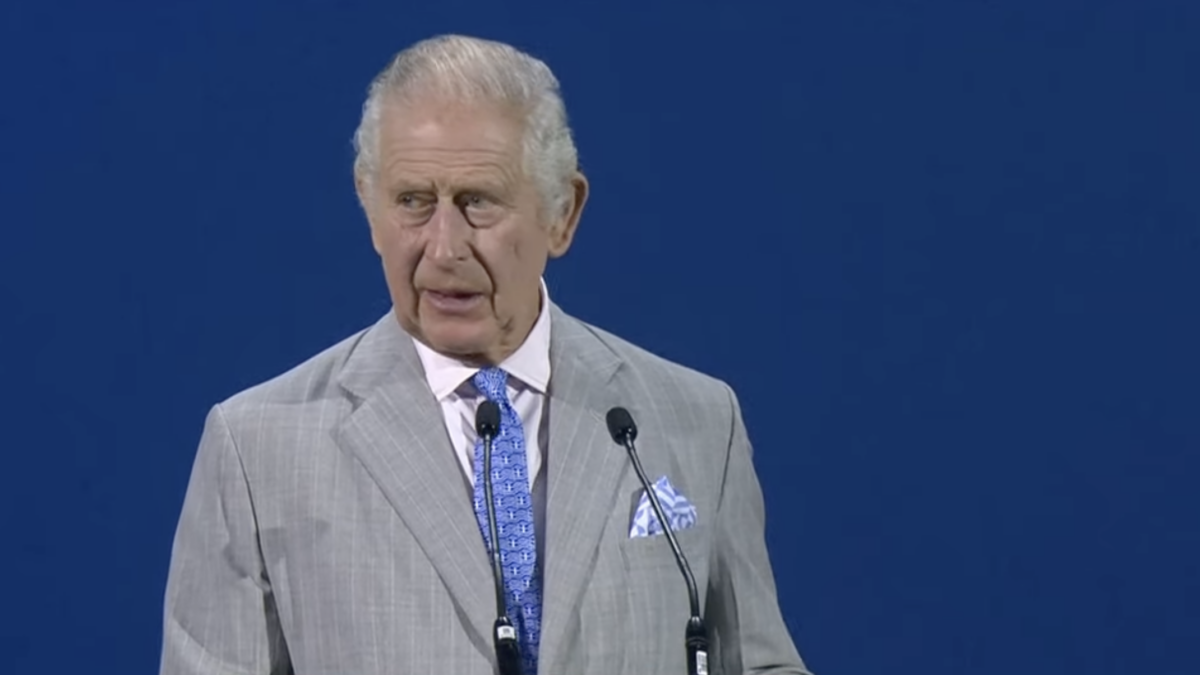
More than 100 years ago, it was not uncommon to find people, usually men, standing on street corners of major cities holding large placards or signs proclaiming, “Repent, the End Is Near.” Most people crossed the street to avoid these doomsayers and their rants of the impending destruction of Earth. Nowadays, such latter-day prophets of the apocalypse lead government agencies—or even entire governments—and are invited to testify to Congress and write lengthy jeremiads in New York Magazine, as David Wallace-Wells did on July 9.
In his article, “The Uninhabitable Earth,” Wallace-Wells issues numerous dire warnings, following in a long line of seers of impending planetary climate doom who have proclaimed only radical action in the form of abandoning the use of fossil fuels can save the planet.
For instance, in his 2006 review of Al Gore’s book and movie “An Inconvenient Truth,” James Hansen, former director of NASA’s Goddard Institute for Space Studies, warned, “We have, at most, 10 years—not 10 years to decide upon action, but 10 years to alter fundamentally the trajectory of global greenhouse emissions … We have reached a critical tipping point. It will soon be impossible to avoid climate change with far-ranging undesirable consequences.”
In 2009, Hansen revised his prediction of doom for the worse, writing, “The dangerous threshold of greenhouse gases is actually lower than what we told you a few years ago. Sorry about that mistake. If the world does not make a dramatic shift in energy policies over the next few years, we may well pass the point of no return.” Hansen’s tipping point date passed has already passed twice.
Also in 2009, Gordon Brown, who was then the prime minister of the United Kingdom, informed countries attempting to negotiate binding, steep greenhouse-gas emissions reductions at a United Nations-sponsored climate conference in Copenhagen, “There are now fewer than 50 days to set the course of the next 50 years and more. If we do not reach a deal at this time, let us be in no doubt: Once the damage from unchecked emissions growth is done, no retrospective global agreement in some future period can undo that choice. By then, it will be irretrievably too late.”
Of course, no deal was reached, so by Brown’s logic, it’s too late to save us.
Wallace-Wells puts his warning of doom this way: “It is, I promise, worse than you think. If your anxiety about global warming is dominated by fears of sea-level rise, you are barely scratching the surface of what terrors are possible, even within the lifetime of a teenager today. … Indeed, absent a significant adjustment to how billions of humans conduct their lives, parts of the Earth will likely become close to uninhabitable, and other parts horrifically inhospitable, as soon as the end of this century … no matter how well-informed you are, you are surely not alarmed enough.”
Wallace-Wells blends speculation with misstated facts, misdirection, and overstated claims to weave a nightmarish scenario of the end of the world if humans don’t repent of their sinful use of fossil fuels.
Antarctica Is Adding Ice
His paper is too long for a point-by-point refutation, so I’ll address just a few important comments briefly. When Wallace-Wells describes the recent calving of an iceberg the size of Delaware from the fourth-largest ice shelf in Antarctica, he hints this widely publicized event was due to global warming, but it wasn’t. Scientists have been tracking this collapse for more than a decade and say it is due to natural causes. Indeed, scientists expect the ice shelf the iceberg broke from to continue growing.
Why? Well, contrary to climate model projections, Antarctica has been adding tens of thousands of tons of ice each year for millennia. A study by NASA published in the Journal of Glaciology shows snow in Antarctica began a long-term accumulation 10,000 years ago and is adding much more ice to the continent each year than it is losing.
NASA’s analysis reveals Antarctica experienced a net gain of 112 billion tons of ice annually from 1992 to 2001, slowing to 82 billion tons of ice per year between 2003 and 2008. As a result, Antarctica is reducing sea level rise by 0.23 millimeters per year. More recent research shows the ice mass on the East Antarctic ice sheet, which is 1,000 percent larger than the declining West Antarctic ice sheet, is adding ice, has been stable for an estimated 600 years, and is likely to remain stable for at least 500 years more.
Wallace-Wells also simply misstates the facts about rising temperatures. Wallace-Wells claims “last month’s satellite data show the globe warming, since 1998, more than twice as fast as scientists had thought.” Even Penn State climate researcher Michael Mann, one of the most visible advocates for the theory humans are causing dangerous climate change, says this claim is “just not true.”
The truth is data from global satellites, weather balloons, and even the highly doctored ground-based temperature measurements demonstrate the amount and rate of global warming over the past half-century is considerably lower than the average predictions of climate models. In fact, Mann says Wallace-Wells’ article consistently overstates even the extreme projections of climate models, calling the NY Magazine article a “doomist framing” of climate science.
Wallace-Wells scares readers with the claim that warming threatens to melt the frozen tundra, unleashing torrents of the powerful greenhouse-gas methane that has lain trapped for eons in the permafrost into the atmosphere, significantly raising Earth’s temperature. However, Mann responds the science “doesn’t support the notion of a ‘planet-melting methane bomb.’” Among the reason’s Wallace-Well’s methane claims are so outlandish is any methane released would be gradual, and methane has a relatively short atmospheric life. (It’s removed from the atmosphere less than 10 years after introduction.)
Wallace-Wells claims many of Earth’s regions would become uninhabitable because of increased global temperature, but those statements do not hold up to scrutiny. Any temperature rise driven by anthropogenic forces will not be uniform. Rather, the coldest, least-hospitable places—under the theory, anyway—are likely to warm the most, with temperate regions along and around the equator expected to experience little if any increase in temperature.
Global Warming Actually Saves Lives
Making cold places moderately warmer makes them more suitable for life and better for agriculture. A 2015 article in The Lancet examined health data from 384 locations in 13 countries, accounting for more than 74 million deaths. The authors determined cold weather, directly or indirectly, kills 1,700 percent more people than hot weather does.
As Jane Brody, the author of The New York Times story discussing the article noted, “Over time, as global temperatures rise, milder winter temperatures are likely to result in fewer cold-related deaths, a benefit that could outweigh a smaller rise in heat-caused mortality.” In short, for health, cold weather is bad, hot weather is good. Get it?
Even heat-related deaths in a warmer world should decline as wealthier future generations in developing countries increasingly gain access to modern health care and adopt technologies such as air conditioning, which have made places such as Arizona, Nevada, Texas, and New Mexico habitable for millions of people. Despite often extreme heat, and the fact more people live in the Southwest than at any time in the past, fewer people die from heat-related illnesses now than they did ever before.
Then There’s the Flawed Farm Report
And then there is what I take to be the biggest fib in the NY Magazine article: a claim in the section titled “The End of Food” that alleges crops will increasingly fail and famine and starvation will increase in a warmer world.
Even as the world has warmed over the past 150 years, crops—including staple grains and cereals like rice, corn, and wheat—have regularly set yield records year over year. You heard that right: during the period of purported dangerous warming, crop yields have increased and starvation and malnutrition have fallen dramatically.
This should not surprise anyone who understands agronomy and plant biology. Most of the warming Earth has experienced has reduced nighttime lows in the winter, rather than increasing daytime highs in the summer. Fewer frosty nights is better for agriculture, as it extends the growing season.
Additionally, the increasing levels of carbon dioxide in the atmosphere have contributed to a general greening of Earth. Many crop and non-crop plants evolved when carbon-dioxide levels were much higher than they are today and thus grow faster and bigger when carbon-dioxide increases.
Copious amounts of research confirm this. Because carbon-dioxide improves plant growth, greenhouse operators artificially add it to their greenhouses. They also regularly artificially heat their greenhouses, because despite the increased carbon-dioxide concentrations, the optimum temperature is not reached with adding carbon dioxide and sunlight alone.
Further, it’s also worth noting that under higher carbon-dioxide conditions, plants use water more efficiently. Even as temperatures rise, they lose less water to transpiration, leaving more of it for fruit, root, and leaf growth.
One study involving 32 researchers who represented nine countries was published in Nature Climate Change. It used three long-term satellite-derived leaf area index (LAI) records and 10 global ecosystem models and found, from 1982 through 2009, “a persistent and widespread increase of growing season integrated LAI (greening) over 25% to 50% of the global vegetated area, whereas less than 4% of the globe shows decreasing LAI (browning).”
They traced this global greening directly to the carbon-dioxide fertilization effect, which they said explains 70 percent of the observed greening. This has been confirmed by satellites, which show areas of desert are being reclaimed by vegetation because of increasing carbon-dioxide levels. I guess the scientists Wallace-Wells consulted missed all the research demonstrating carbon dioxide is good for plants!
I don’t often agree with Michael Mann, but concerning Wallace-Wells’ “The Uninhabitable Earth,” his conclusion is spot on: “The article argues that climate change will render the Earth uninhabitable by the end of this century,” Mann told the Philadelphia Inquirer. “Extraordinary claims require extraordinary evidence. The article fails to produce it.”









